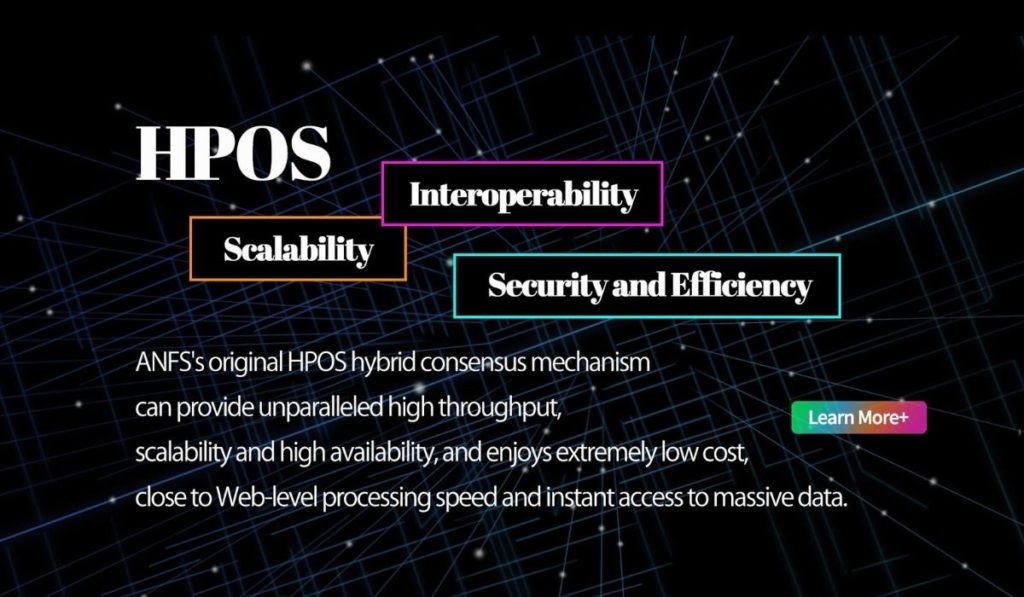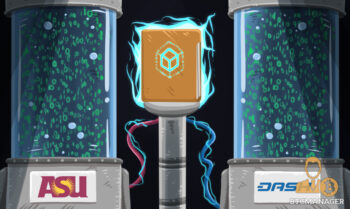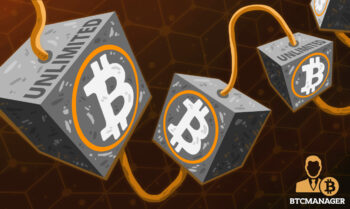2019-9-30 10:55 |
As the world of blockchain fights the long fight with the scalability issue, ILCoin Blockchain Project is preparing to release their own solution. According to the tests, RIFT, a protocol that utilizes 2-tier blockchain architecture, makes stable 1.5 Gb blocks a reality and creates unlimited potential for up-scaling blockchain networks.
In this interview, Norbert Goffa, the Executive Manager of the project, tells us about ILCoin’s new developments in the field of on-chain data storage and how they can help to improve our lives in many ways, way beyond the crypto industry.
Q: Why is blockchain scalability a big problem as cryptocurrency use expands? What is the best solution to this issue?
A: Right now, scalability is the key problem for the blockchain market. When a network expands, at some point the very architecture of blockchain cannot keep up with the load anymore. The inability to effectively overcome the current block size limit brings many difficulties. As far as TX operation is concerned, it will result in higher transaction costs and slows down the system. But what if we talk about the widespread utilization of the blockchain?
Having a large block size is the backbone of everything unless we consider moving the data off-chain. Needless to say, there are many critics of the on-chain counterpart. However, I believe that their arguments are based on their lack of deep understanding of technology. Practice shows that off-chain solutions are way less secure. Yes, they may be fast and easy to manage, but data safety is their weak spot. That is why we chose to increase the block size and build an on-chain solution based on RIFT, our new protocol.
Q: What is RIFT Protocol and how does it solve blockchain scalability problems?
A: In short, RIFT is a protocol that gives us potentially unlimited block size and at the same time allows us to transfer immense amounts of data through the current network system quickly, securely and without any losses.
To achieve that, we utilized mini-block technology and the principle of simultaneous synchronization. With RIFT, our blockchain will have a sub-level of interconnected mini blocks, which will also have references to their parent blocks. This structure will allow us to expand the network almost endlessly. Our only limitation at the moment is the technical capabilities of the system, but we are working on it. Our development team has already successfully tested a stable 1.5 Gb block, and now they are heading for 5 GB.
Q: What was the idea/ inspiration behind this unique technology (two-tiered blockchain)?
A: Over the past few years, we’ve seen quite a transaction speed race. The competition is high. Everybody aims to get assessed based on this aspect. Even though the facts suggest that the transactional capabilities of RIFT are way beyond even VISA’s, this is not something we’ve ever been overly obsessed with or attributed the high importance to.
Our main goal is to lay the foundation for on-chain storage via RIFT. This is what carries the intellectual challenge for us and makes it worth working hard and getting up for every single morning. We aspire to deliver the very first solution in the world that allows to storing files, videos, and images in an on-chain base. This is where RIFT comes into the picture: without this astonishing technology, that would be simply impossible.
Q: For the neophyte crypto user, explain in the simplest way how RIFT protocol’s Block and Mini Blocks work.
A: I like to compare RIFT to a human body. Mini-blocks are DNA-like: they carry the information, they know each other’s properties, and they can form a unity. The best part of our technology is that the data is so homogeneous that it binds the mini blocks together so strongly that there is no way this bond could be broken. This way all the information is safe no matter how large the file might be. And the way RIFT transmits data is closest to teleportation.
Q: How is RIFT protocol different from other two-layer blockchain protocols?
A: RIFT is different from any other current solution in every aspect. It fundamentally revolutionizes the way data is stored. At the moment, no other project is capable of handling large amounts of data in an asynchronous manner and with simultaneous synchronization. Plus, we have a unique reference system where the mini-blocks connect to each other in a different way than they do in other blockchains. In other words, RIFT is bound to revolutionize data storage industry.
Q: How can you assure RIFT will be foolproof given its a new technology?
A: Our long-term goal is to create a DCB (Decentralized Cloud Blockchain) platform, where we will offer a wide range of useful solutions, including safe and convenient data storage, digital wallets, customizable smart contracts and an option to create your own applications. With a goal like this in mind, we couldn’t allow for any half-measures.
Our goal is to build a stable product, that is why put so much thought in making it foolproof. We broke the development down in stages, with extensive testing on each stage. First, we secured the system with our Palo Alto Network Partner certified C2P consensus. We have been working on RIFT technology since 2018. Our recent tests have confirmed that the 1.5 Gb stable block is already a reality. Now we are refining the protocol and will perform even more tests before the release.
Q: How does RIFT work with C2P, your award-winning blockchain security technology?
A: We knew that the solution we had in mind should have a secure base behind it. No one wants their important data lost or leaked. This is what C2P was made for. In the face of 51% attacks which put every PoW blockchain in danger and the quantum threat, we had to make sure our users are well protected.
C2P makes our system even more safe and secure, while RIFT is about efficiency. These two technologies are brilliant in their own right, but together they form such a strong, steady and scalable foundation for DCB that it is possible to establish a high-scale multi-billion dollar business on it.
Q: How do you see this technology paving the way for better blockchain use in the future? Can the tech be adopted by other cryptos as well?
A: One of my biggest aspirations is to contribute to the development of the entire industry. Unfortunately, recent years have not brought along any substantial results or achievements. I don’t want to sound too arrogant, but I believe it is safe to say that the ILCoin Development team has become the most successful team of 2019, owing to the development of C2P and RIFT. No one had done that before.
As for the adoption, we are glad to share our developments with the world. The basis of ILCoin’s technology corresponds with the one of Bitcoin. Both of us have built on the SHA-256 PoW system, which means that both C2P or RIFT could get easily implemented into the BTC system. Clearly, C2P utilization would be impossible from a practical perspective since our mining system is structured differently.
RIFT could solve the problem of Bitcoin, and after some smaller adjustments, it could also become compatible with other systems, too, such as Ethereum’s. Needless to say, larger projects do need to make some type of progress. We can only hope that our success will also urge and motivate other projects to achieve greater results. However, we recommend the approach we represent to exclusively those who consider safety, transparency, and decentralized data storage as the most significant factors. For us, users are of the highest priority; we are creating DCB for them.
More information about ILCoin is available at – https://ilcoincrypto.com/
The post Interview with Norbert Goffa: How ILCoin Blockchain Project Solves the Scalability Issue and Creates the New World of Blockchain appeared first on NewsBTC.
origin »High Performance Blockchain (HPB) íà Currencies.ru
|
|



















